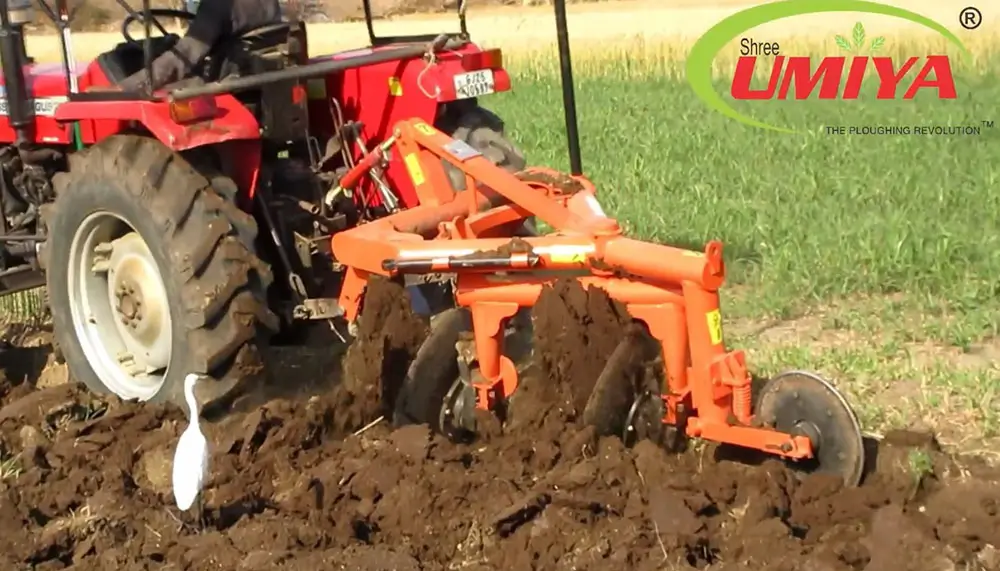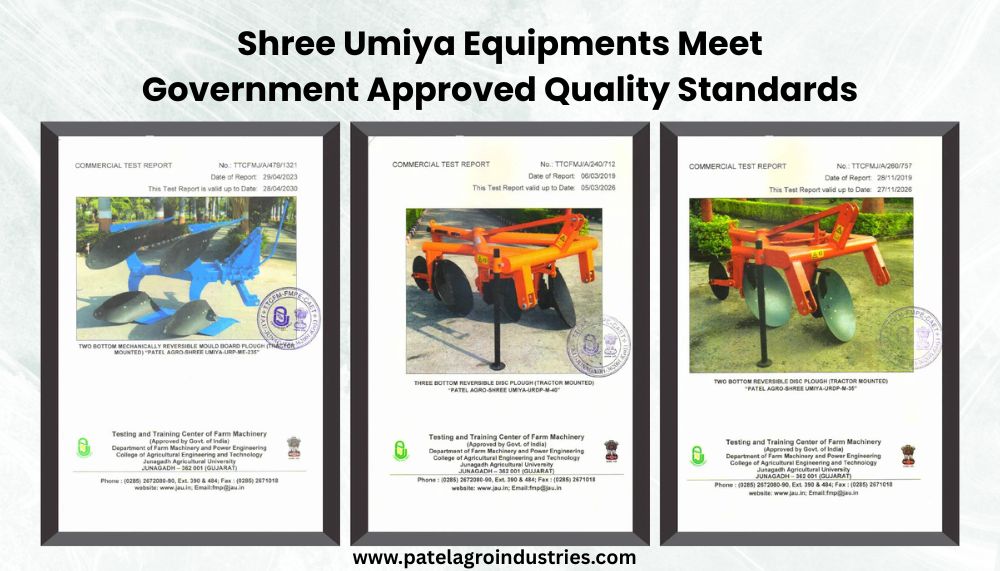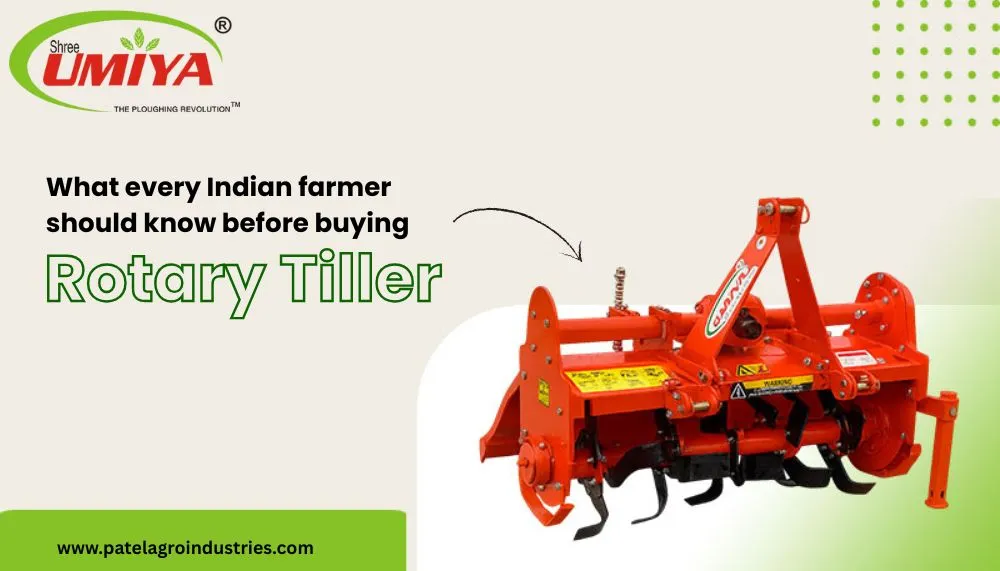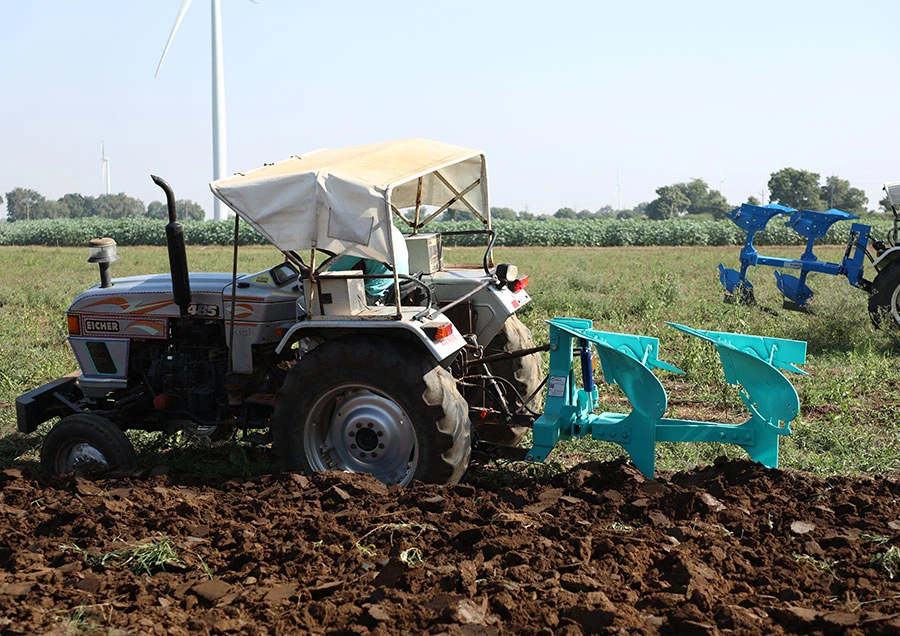Chat With Us
+91 99253 37969Exploring Disc Plough Application and Adjustment Methods

Agriculture is adopting technology and machinery to improve efficiency and productivity these days. Disc plough is one of the best examples of such a technology. It not only helps farmers in effective soil inversion and cropping but also provides a pool of advantages in terms of eco-friendly farming, weed control, labour cost management, and many more.
However, many farmers are still unaware of the real-time usage of disc ploughs. Those who have some practical awareness about its use, lack knowledge about its adjustment methods to improve functionality. In this blog, we will discuss the real-time use of this plough and its different adjustment methods to enhance productivity.
Application And Uses Of Disc Plough
1. Soil Preparation
Disc ploughs are primarily used during tillage activity for soil inversion. It is a crucial process for productive farming by which the soil is prepared for seed sowing and other activities. Using a disc plough farmers can invert tough and earthy soil to make it suitable for planting crops. This process not only aerates the soil but also facilitates the removal of weeds and residues. Therefore, it promotes clean and fertile planting.
Their mechanical design enables them to penetrate tough and compacted soil with ease. It is possible due to the hydraulic mechanism that generates power for high-speed rotating blades. Hence, the construction of disc ploughs ensures durability and reliability that allows them to withstand the rigours of challenging soil conditions.
2. Furrow Creation:
One of the key functions of disc ploughs is the creation of furrows. Furrows are essential for planting seeds or seedlings in organized rows. The mechanical precision of disc ploughs enables them to adjust the depth and width of furrows according to the specific requirements of different crops. By tilting the disc blades at various angles and adjusting the depth control mechanism.
Therefore, farmers can achieve precise furrow dimensions tailored to the needs of their crops. This versatility ensures uniformity in planting depth and spacing. Furthermore, it facilitates optimal seed germination and crop growth.
3. Residue Management:
Disc ploughs contribute significantly to crop residue management by effectively incorporating organic matter into the soil during ploughing operations. The rotating disc blades of the plough cut through crop residues such as stalks, leaves, and other plant debris. It effectively chops them into smaller pieces and uproot the weeds. This mechanical action accelerates the decomposition process, allowing organic materials to break down more quickly and become integrated into the soil.
Hence, the soil structure and fertility are enhanced over time, promoting better water retention, nutrient availability, and overall soil health. Moreover, by burying crop residues, disc ploughs help reduce weed pressure and minimize the risk of disease and pest infestation. It contributes to improved crop yields and agricultural productivity.
Practical Adjustments In Disc Plough
1. Depth Adjustment:
The depth of a disc plough is crucial for effective soil penetration. It can be adjusted either by altering the angle of the disc blades or utilizing the depth control mechanism. This flexibility allows farmers to adapt to varying soil types and cropping systems. Hence, depth adjustment ensures optimal ploughing depths for improved soil preparation and better productivity.
2. Angle Adjustment:
The angle of the disc blades determines the cutting and turning action of the plough. By adjusting the angle, operators can control the aggressiveness of the cutting action. Increasing the angle results in more aggressive cutting while decreasing it reduces the cutting intensity. It offers versatility in tackling different soil conditions and vegetation densities. Therefore, angle adjustment is critically important during plantation on stony soils.
3. Gang Adjustment:
Advanced disc ploughs often feature multiple gangs of discs that can be adjusted independently. This allows for precise customization of the ploughing operation. It enables farmers to create ridges, furrows, or level surfaces of specific dimensions. Such fine-tuning enhances efficiency and accuracy in soil preparation and furrow creation. Gang adjustments help in power conservation and deep penetration. You can dig deep into the soil using a few blades.
4. Hitch Adjustment:
Proper hitch adjustment ensures the disc plough is correctly aligned and balanced behind the tractor. This optimization not only enhances performance but also minimizes wear and tear on both the plough and the tractor. Therefore, it ensures longevity and reliability in agricultural operations.
Moreover, hitch adjustment can improve the soil inversion process by strengthening disc movement.
5. Blade Maintenance:
Regular maintenance of disc plough blades is essential for sustained performance. Sharpening or replacing dull or damaged blades ensures proper spacing and alignment. You can lubricate moving parts to prevent rust and corrosion. It will help in prolonging the lifespan of the equipment and maintaining optimal efficiency in soil preparation.
Takeaway
In conclusion, understanding both practical use and adjustments about disc plough can result in immense benefits. It can serve higher productivity, reduced crop time, and enhanced crop management. If you have any doubts regarding the adjustments, feel free to contact an experienced plough manufacturer.





